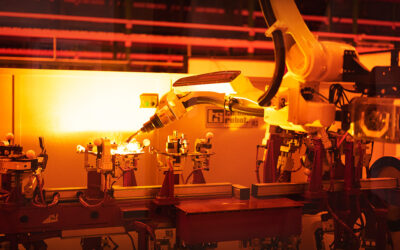The South African government is in the process of finalising the New Energy Vehicle (NEV) roadmap that will pave the way for a more sustainable automotive future in the country. This framework is building upon the second phase of the current Automotive Production and Development Programme (APDP2) and will be production-led, rather than consumption-led.
This means that South Africa hopes to position itself as a key manufacturer of NEVs and sustainable vehicles, instead of being an importer. The Minister for Trade, Industry and Competition, Ebrahim Patel, presented the details of the roadmap to the Presidential Climate Commission and described it as a working document with a compelling case for South Africa to make the strategic shift to NEV production.
This conclusion was drawn after a lengthy cost-benefit analysis, which revealed that it will be more beneficial for the local manufacturing industry to shift away from internal combustion engines (ICEs) to NEVs, including battery-powered electric vehicles (EVs), rather than trying to capture a larger share of the remaining ICE markets.
This is largely due to international car brands announcing complete EV line-ups over the coming decade and moving away from non-renewable engine power plants. Many Formex customers, both direct and indirect, have already announced that they will be phasing out ICEs and shifting into full-scale EV production over the next few years. This is the right time for the local manufacturing sector to make the shift too.

How will exports be affected by the NEV roadmap?
The cost-benefit analysis revealed that it may be challenging to capture new ICE export markets as the world is shifting away from these powertrains. The UK and Europe currently take 45% of South Africa’s passenger vehicles, but these export markets are rapidly ditching combustion engines in favour of NEVs.
Both the UK and the European Union (EU) have stated that they will ban the sale of ICE vehicles between 2030 and 2035; this includes soft hybrids – cars that use electric motors in conjunction with combustion engines. Both of these markets are also increasing import taxes and carbon taxes on ICE vehicles.
According to Minister Patel, the shift to NEVs will allow South Africa to retain and grow the automotive manufacturing sector, which currently contributes around 5% to the gross domestic product (GDP) and employs over 100 000 people directly. “We have not closed our eyes to the other options. We have looked at them and we have concluded that it would be in South Africa’s best interest to move to electric vehicles,” states Minister Patel.

Government to support NEV manufacturing
The government is currently developing a competitive support package that will create an enabling environment for the local production of NEVs. Minister Patel says that there is a growing allegiance within the government on this package, despite it being a complicated and challenging topic amid the current budget constraints and electricity crisis.
“We have moved from a set of costing exercises to a point that there is a growing convergence within government on what is required for the enabling environment for NEV production in South Africa,” he explains. The fiscal implications of this support package will be announced by the Minister of Finance, Enoch Godongwana, in the near future.
After various industry stakeholders advocated for NEVs and the production thereof, the government agreed to take a production-led approach to the roadmap. Growth in domestic demand for NEVs will be supported by lower tariff barriers in order to trigger investment.
“Our approach is led by a focus on the ‘at-risk’ export markets. Let’s get production of EVs right, export to those markets where there is both spending power and the regulatory incentives to encourage consumptions,” says Minister Patel.

Toyota RAV4 Hybrid ©Alexander Migl
Next steps for manufacturers
As the government builds upon the existing APDP2 framework for this NEV roadmap, the next step is to identify and prioritise those automotive components that can be manufactured locally for both NEVs and ICEs. Many of Formex’s products and assemblies fit into this category, where NEVs and ICEs will need the same or similar parts, such as seatbelt anchors, window frames and door sills.
The timing of this roadmap is critical. It must align with investment decisions and the lead times of automakers when they consider next-generation models. Many of these new EV lineups are coming before 2030, so South Africa cannot delay this shift too long. The government will also funnel part of the US$8.5-billion investment from the Just Energy Partnership Investment Plan into NEV projects and new manufacturing infrastructure.
Formex welcomes this plan to shift to NEV manufacturing as the world is phasing out ICE vehicles. The NEV roadmap will build a solid foundation for the country to establish itself as a competitive production hub for new-age vehicles. For more information about our components and products at Formex, please contact us today.
Formex Industries is a metal forming and assembly company that supplies a variety of complex products to the local automotive industry and the export market. The company is based in the Nelson Mandela Bay metropole, South Africa’s foremost region for automotive manufacturing and export.
Formex is a Level 2 B-BBEE supplier. The company is owned by Deneb Investments Limited – a subsidiary of Hosken Consolidated Investments Limited (HCI) – one of South Africa’s biggest true B-BBEE companies listed on the Johannesburg Stock Exchange (JSE).
Follow us on Facebook for the latest industry news and features relating to our products and services.





